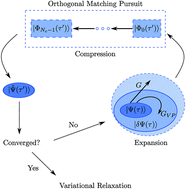Compact wavefunctions from compressed imaginary time evolution†
Abstract
Simulation of quantum systems promises to deliver physical and chemical predictions for the frontiers of technology. In this work, we introduce a general and efficient black box method for many-body quantum systems using technology from compressed sensing to find compact wavefunctions without detailed knowledge of the system. No knowledge is assumed in the structure of the problem other than correct particle statistics. As an application, we use this technique to compute ground state electronic wavefunctions of hydrogen fluoride and recover 98% of the basis set correlation energy or equivalently 99.996% of the total energy with 50 configurations out of a possible 107.



 Please wait while we load your content...
Please wait while we load your content...